3 Nights / 4 Days
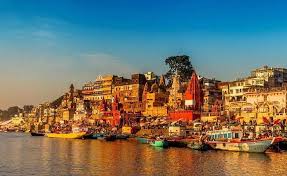
Arrival at Varanasi Airport , pickup and transfer to Hotel , Check in Hotel ,Later visit New Vishwanath Temple (B.H.U.), SankatMochan Temple, TulsiManasMandir, DurgaMandir, Tridev Temple . In evening GangaAarti with Boat ride (Direct Payment) at Main Ghat. Overnight stay at Varanasi.
Note :-Gangeaarti takes place at 6.45 PM Summer / at 6.15 PM Winter in the evening after the sunset for around 45 minutes at the Dashashwamedhghat in the Varanasi. Devotees have started to come to see the Gangeaarti at least one hourbefore
Early Morning at 5.30 am proceed to Gangaji for holy dips and visit Main Kashi Vishwanath Temple, Annapurna Temple, Vishalakshi Temple & Kaal Bhairav Temple. After Breakfast at 10.30 am proceed drive to Ayodhya
Chhoti Devkali Temple This temple is associated with several tales from the Ramayana and is situated near NayaGhat. As per mythology, Mother Sita after her wedding with Lord Rama arrived in Ayodhya with an idol of goddess Girija Devi. King Dashrath got a beautiful temple constructed for the idol and Mother Sita used to worship the Devi in the temple. An impressive statue of Goddess Devkali, the local deity, is present now.
Hanuman Garhi is one of the most popular temples in the region. Legend has it that Lord Hanuman used to live here to protect Ayodhya. Set amidst shops selling religious articles and besanladdoos, visitors are required to park a short distance away and take a walled-in flight of over 70 steps to reach the temple.The sanctum is stocked with profusely painted pillars, brackets, and stucco figures. The main temple houses a statue of Mata Anjani and Bal Hanuman seated on her lap.
KanakBhawan Temple in Ayodhya is dedicated to Lord Ram and his divine consort Goddess Sita. The magnificence of this place and the deities installed in the sanctum leave the devotees spell bound. Built more as a sprawling palace rather than a shrine, the KanakBhawan Temple resembles the magnificent palaces of Bundelkhand and Rajasthan region of India. The history of the temple dates back to Treta Yug. According to local legends, Queen Kaikayi, Lord Rama’s stepmother had gifted this palace to Goddess Sita, her newly arrived daughter-in-law and step son Rama. Later, a grand temple was built by the royal house of Orchha and Tikamgarh in the late 19th century. A high-ceilinged hall with arched doorways on three sides across a massive courtyard houses three sets of gold-crowned idols of Lord Rama and Goddess Sita under a silver canopy. Unlike other shrines, the airy, open spaces of the evidently Bundela influenced architecture of KanakBhawan allows for quiet corners and comfortable ambience. The idols of Lord Rama and Goddess Sita are exquisitely adorned with gold ornaments, from which the temple derives its name – ‘kanak’ meaning gold.
Mani Parvat This is the place where some parts of sanjivniBooti fell off while Lord Hanuman was carrying the huge mountain of SanjivniBooti to Lanka to save injured Lakshman, brother of Lord Rama. The hillock, about 65 feet high, was later named as Mani Parvat.
NageshwarnathTemple is dedicated to Lord ShriNageshwarNath, the presiding deity ofAyodhya. It is believed that this beautiful temple was built by Lord Rama’s sonKingKusha. TheShivalinga present in thetemple is quite ancient. As per folklore, King Kush was taking bath near River Saryu when his armletfell in the water; it was picked up by a naagkanya who was in love with him. Since shewas a devotee of Lord Shiva, King Kush got the temple constructed for her. Being one ofthe most important and venerated temples in Ayodhya, it attracts large crowdsofdevotees from all over during the festivals of Trayodashi and Mahashivaratri. The presentedifice of the temple was constructed in 750 AD.
Nandigram (Bharat Kund) The holy kund is 15 KM from Faizabad. This is believed to be the site where Bharat, the brother of Lord Rama did tapasya (deep meditation) for his return from exile and ruled the kingdom of Kosala on Lord Rama’s behalf. It is presently a peaceful and serene place to spend some moments in tranquillity and practice meditation away from the chaos. People also come here to perform the shraddh ceremony (prayers for departed ones) and also take a dip in the Kund. It also facilitates guesthouses with basic amenities.
Ram Janmabhoomi Temple is one of the major attractions of Ayodhya. It is considered to be the birthplace of Lord Ram the 7th incarnation of Lord Vishnu. The place has an utmost significance for the devotees of Lord Rama. Visitors pour in from around the world to take a glimpse of this divine attraction.
Ram kiPaidi is a series of ghats on the bank of River Saryu. The river front brings forth an outstanding Landscape especiallyin floodlit night. These serve as platforms to devotees who it is said, come towash away their sins by taking a dip in the river.
Shish Mahal This magnificent temple, is dedicated to Lord Rama and Mother Sita. The temple is inlaid with cut-glass and stained inexquisite patterns. It dates back to the 14th century AD.
Tretake Thakur Temple is located at the NayaGhat of Ayodhya. It is dedicated to Lord Rama, who is known as ‘Tretake Thakur’. It is believed that this temple has been built over the place where Lord Rama had performed the AshvamedhaYajna. About 300 years ago, the King of Kullu built a new temple here, known as ‘Kaleramka Mandir’. In 1784, the Maratha Queen, AhilyabaiHolkar of Indore, renovated this temple. It houses the idols of Rama, Sita, Laxman, Bharat, Shatrughan, Guru Vashishtha, Hanuman, Sugreev and guards – Jai and Vijaya which are made of black sandstone and believed to have been recovered from the original Ram temple that stood near Saryu River. The temple opens only once a year, on Ekadashi (eleventh day) of ShuklaPaksha in Kartik Month. The day is celebrated with pomp and gaiety along with a special pooja. Huge number of devotees visits the temple to offer prayers to the deities. Overnight stay at Ayodhya .
After breakfast drive to Allahabad , visit Triveni Sangam One of the holiest places in Central India, in Allahabad (Prayagraj). In fact it is the meeting point of three rivers - Ganga, Yamuna, and Saraswati (which is a mythical river, supposed to have dried up more than 4,000 years ago). All three rivers Ganga, Yamuna, and Saraswati are highly revered rivers in Indian mythology, and hence the confluence point of these rivers hold tremendous religious importance. It is one of the places where the KumbhMela is held once every 12 years. The exact date of the Mela is determined according to the Hindu calendar “ Panchanga “
According to Hindu mythology, taking a bath in the holy TriveniSangam is supposed to flush away all the sins and free you from the cycle of rebirth. Moreover, the Sangam itself is a beautiful and peaceful place to visit. The brownish Ganga meeting the slightly greenish Yamuna is indeed a sight to behold. If you take a boat ride to the gently flowing waters of Ganga and Yamuna, you'll be able to make out the difference in colours of water from the two rivers. There are also makeshift wooden banks made at the Sangam. Hence, devotees who want can take a bath right at the confluence point. The water is clean enough at the Sangam for a bath, especially during the winters; and also not very deep, so it is fun to take a dip in the water here.
Alopi Devi Mandir is situated next to the place where the Ganga, Yamuna, and Saraswati rivers converge. This temple is one of the holiest in India. It is believed that when Sati was burnt, Lord Shiva was moving around the sky with her body. When Lord Vishnu saw this sight, he threw his chakra at the corpse to relieve Lord Shiva from the immense pain. All the places where her body parts fell are considered sacred till today and called the “Shaktipeeths.' Alopi Devi Temple is considered the place where the last part fell, and Sati disintegrated. The striking feature of this holy shrine is the wooden cot also known as doli, which is worshiped and not a deity inside the temple. Devotees from all over the country visit this place for its sanctity. The Navratri festival is celebrated on a grand scale here with utmost spectacle and joy. The temple is unique and definitely worth a visit.
Allahabad Fort is a splendid work of architecture that was built during the reign of Akbar, the Mughal Emperor in 1583. The marvellous structure is located on the banks of the confluence of the Rivers Ganga and Yamuna in the North-Indian state of Uttar Pradesh. Allahabad Fort is well-known for being the largest fort ever built by Akbar. This famous attraction draws thousands of tourists from all over the world not only for its historical importance but also for its architectural magnificence. However, one should note that quite unfortunately, access to Allahabad Fort is generally closed to the common public. Tourists are allowed inside only during the KumbhMela, which is held once every 12 years. Nevertheless, the glorious architecture and the massive build of the monument as it stands strong on the banks of the confluence of the two rivers is a sight to behold!
The Allahabad Fort holds a huge sigmificance and is managed by the Archaeological Survey of India. This is quite a big occasion - especially for a lot of locals who have heard stories and legends about this fort but haven't got a chance to visit it in person. The fort is also quite well known for its Akshayavat Tree (Banyan Tree) which, according to a legend, was used by the locals to commit suicide to attain salvation. For those who wish to see the Akshayavat Tree, entry is allowed through a small gate to only the area that is occupied by the magnificent tree. The fort is also home to the Patalpuri Temple, which is said to be home all the gates of hell. The best way to explore the Allahabad Fort from outside is on a boat ride in the river either during sunrise or sunset.
Hanuman Temple Colloquially known as Bade Hanuman Mandir, Hanuman Temple is located at Sangam area of Allahabad. The temple is possibly the only one of its kind for it is constructed under the ground and the posture of Lord Hanuman is in a leaning back position. The shrine is a popular pilgrim spot in the city and stays especially busy on Tuesdays and Saturdays.
Ashoka Pillar Placed outside the Allahabad Fort, this 16th century structure was constructed by Emperor Akbar. The exterior of the Ashoka Pillar has inscriptions from Ashoka in the Brahmi script. Even Samudragupta and Jahangir have added some inscriptions later in the Gupta script, a refined version of Brahmi.
AnandBhavan is the former residence of Nehru family which has now been transformed into a museum showcasing various artefacts and articles of the era of Independence movement in India. When the prior residence of Nehru's family SwarajBhavan started to be used as an office of Indian National Congress, a new Nehru residence was designed by Motilal Nehru, a notable independence movement leader, and politician.
The double-storey mansion was personally designed by Motilal Nehru. The house was beautifully adorned with the wooden furniture imported from China and Europe and was decorated with various artefacts from all around the world. The mansion has an important historic value not only because of its construction but also for the major role that it has played in the history of India. It was visited by many famous freedom fighters to develop the conspiracies to drive Britishers out of the country. In the year, 1970, AnandBhavan was donated to Indian government by Indira Gandhi, to convert it into a National museum to keep intact the legacy of Nehru family.
Allahabad Museum gives the visitors a beautiful insight into the history, culture, heritage and independence movement of India. The museum is situated inside the famous Chandrashekar Azad park, where he sacrificed his life. It is surrounded by lush green gardens all around it, which gives the museum a very pleasant feel. The museum is most famous for its rock sculptors, the miniature paintings from Rajasthan, terracotta from Kaushambi, literary and artwork from Bengal School of Art.
The museum displays some great artefacts of the art, history, archaeology, architecture, environment and literature. Beginning from the historic era of Harappancivilisation, the artefacts of the medieval period, the carvings from the Gupta period and Khajuraho, to the Independence struggle of India against the British, Allahabad museum is a treasure of Indian history.move drive to Varanasi Overnight Stay at Varanasi .
Check out from hotel & transfer to Airport for connect Flight to next destination with sweet memories
| No of pax | Age Limit | Price per pax (Rs) |
|---|---|---|
| Adult | Above 12 years | 5200 / Adult ( With Tax ) |
| City | Hotel Name | Star Rating |
|---|---|---|
| Varanasi | Hotel RameshwaramVatika / Hotel Premiere Villa or similar | |
| Ayodhya | Hotel Ramprastha / Hotel Taraji Resort or similar |
Travelling is one of the few things in life that provides true happiness to a person. Sixth Sense Holidays is one of the premium tour and travel companies located in Pune, Maharashtra well-known for offering host of travel services with the view of providing the clients with the most enthralling and fulfilling travelling experience. Different types of services offered by us include Airline Ticketing Service, Hotel Booking Service, Car Rental Service, Event Organizing Service and Travel Insurance Service. We are also one of the reputed Tour Operators operating in the region offering attractive tours such as Domestic Tour, International Tour, Adventure Tour and Beach Island Tour. Read More...
5,200 PP
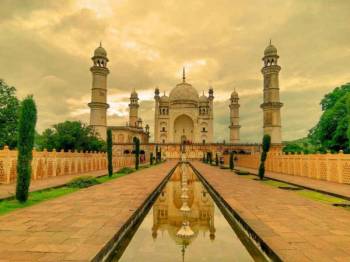 3D/2N
3D/2N
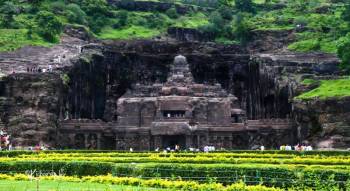 3D/2N
3D/2N
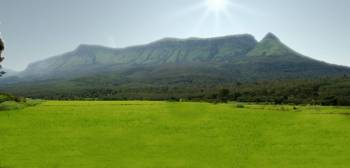 2D/1N
2D/1N
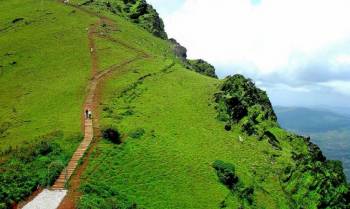 3D/2N
3D/2N
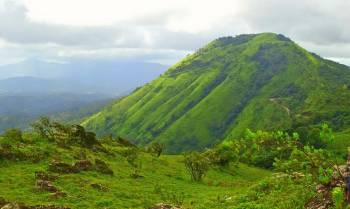 4D/3N
4D/3N
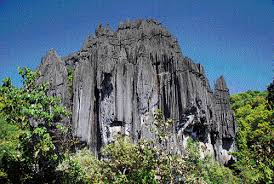 5D/4N
5D/4N
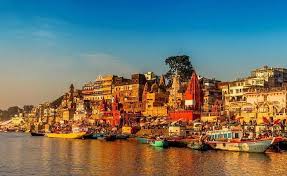 4D/3N
4D/3N
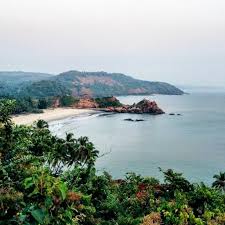 4D/3N
4D/3N
3n 4d Kudal to Kudal Tour Package
Tarkarli - Malvan - Alsisar - Deshnoke - Osian
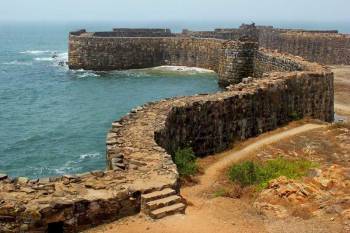 3D/2N
3D/2N
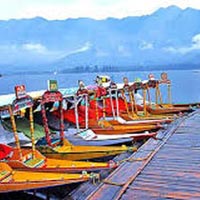 4D/3N
4D/3N
 4D/3N
4D/3N
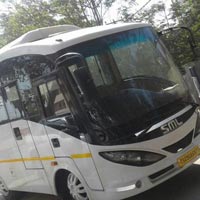 4D/3N
4D/3N
Hyderabad-Basar-Aurangabad-Shirdi-Ahmedn..
Shirdi - Ahmednagar - Hyderabad - Aurangabad - Basar
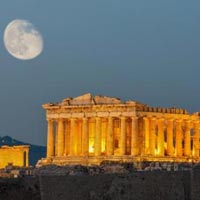 4D/3N
4D/3N
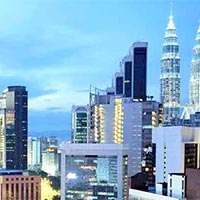 4D/3N
4D/3N
 4D/3N
4D/3N
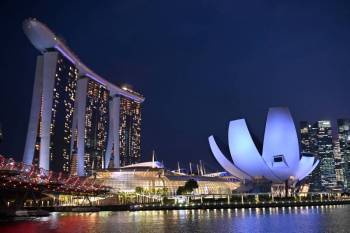 4D/3N
4D/3N
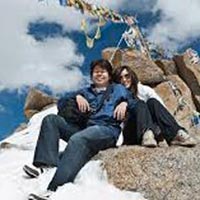 4D/3N
4D/3N
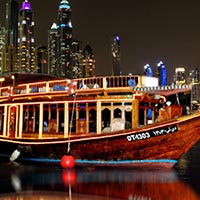 4D/3N
4D/3N
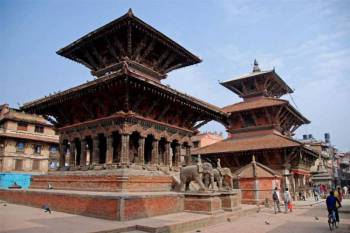 12D/11N
12D/11N
11 Nights - 12 Days Nepal Tour Package - 2
Prayagraj - Gorakhpur - Varanasi - Ayodhya - Kathmandu - Pokhara - Chitwan - janakpur
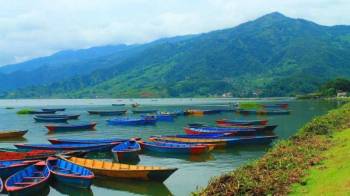 12D/11N
12D/11N
11 Nights - 12 Days Nepal Tour From Gora..
Prayagraj - Gorakhpur - Varanasi - Ayodhya - Kathmandu - Pokhara - Chitwan - janakpur
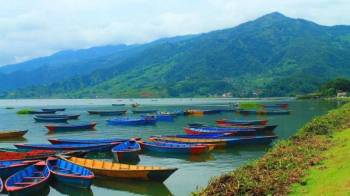 12D/11N
12D/11N
11 Nights - 12 Days Nepal Tour From Gora..
Prayagraj - Gorakhpur - Varanasi - Ayodhya - Kathmandu - Pokhara - Chitwan - janakpur
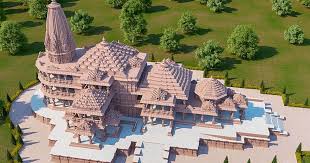 12D/11N
12D/11N
Prayagraj - Varanasi - Bodhgaya - Ayodhya - Pokhara - Chitwan - Parsa
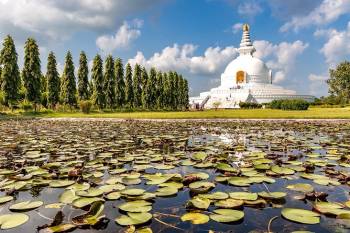 8D/7N
8D/7N
7Night Varanasi - Ayodhya - Lumbini - Po..
Varanasi - Ayodhya - Kathmandu - Pokhara - Lumbini
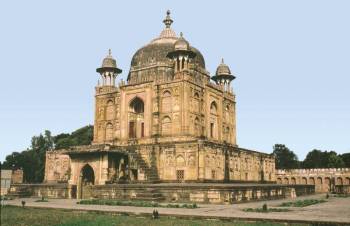 7D/6N
7D/6N
Uttar Pradesh Tour Package 6 Nights - 7 ..
Prayagraj - Varanasi - Bodhgaya - Ayodhya
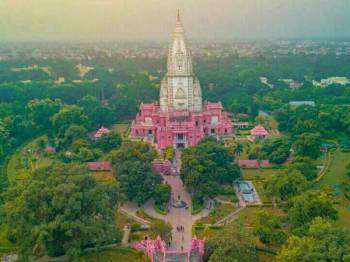 7D/6N
7D/6N
7 Days Allahabad - Ayodhya - Varanasi - ..
Prayagraj - Varanasi - Bodhgaya - Ayodhya
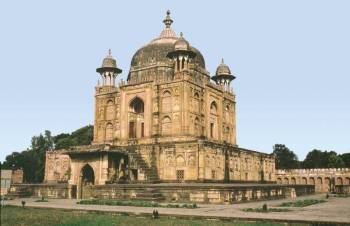 7D/6N
7D/6N
Uttar Pradesh Tour Package 6 Nights - 7 ..
Prayagraj - Varanasi - Bodhgaya - Ayodhya
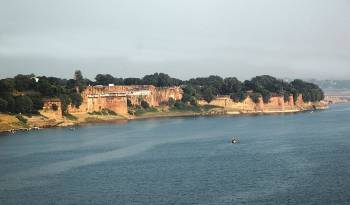 7D/6N
7D/6N
6 Nights Allahabad - Ayodhya - Varanasi ..
Prayagraj - Varanasi - Bodhgaya - Ayodhya
Ayodhya is famous for its delicious vegetarian dishes which include Khichdi, Kadhi, Baati Chokha, Laddu, Jalebi, and Thandai. Street food is also quite popular for its taste.
Diwali, Ram Navami, Hanuman Jayanti, Vijayadashami, and Dussehra festivals are celebrated with great enthusiasm in Ayodhya.
Among the top places, Ram Janmabhoomi Temple, Hanuman Garhi, Kanak Bhawan, Nageshwarnath Temple, Tulsi Memorial Building, and Saryu River are very special the travelers like to visit.